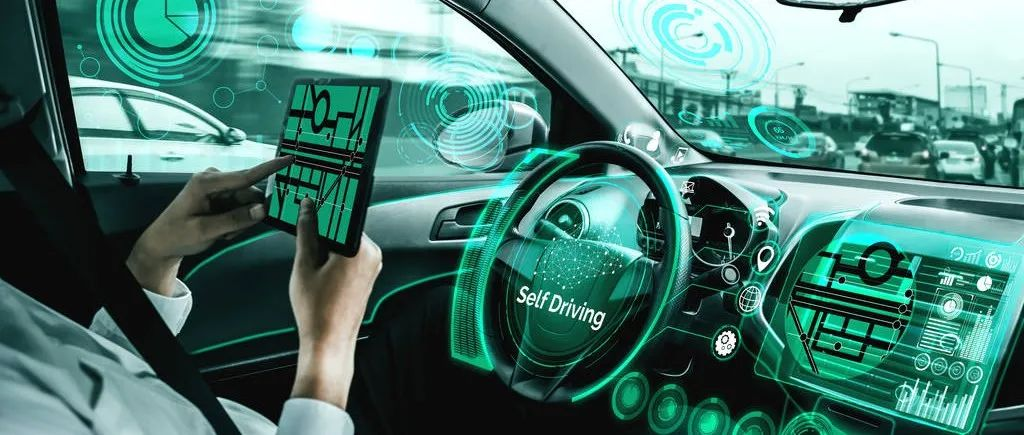Author: Zhu Yulong
The information about intelligent cabins and networked functions in the “Insight Report on China’s Intelligent Car Development Trends in 2022” deserves attention. The report analyzes the content of new car models and consumer concerns from the perspective of a portal website.
The market penetration rate of intelligent cabins (including T-box) has been growing rapidly by nearly 60% on average in the past five years. In the analysis, we can see that the median car purchase expenditure in China’s passenger car market is 130,000 yuan, which means that the coverage rate of all car models above 150,000 yuan exceeds 40%.
Interestingly, in 2021, E-star, a car model priced below 50,000 yuan, also implemented remote start as a standard feature. The speed of electronic function penetration and differentiation in the new electric vehicle system is faster than we imagined.
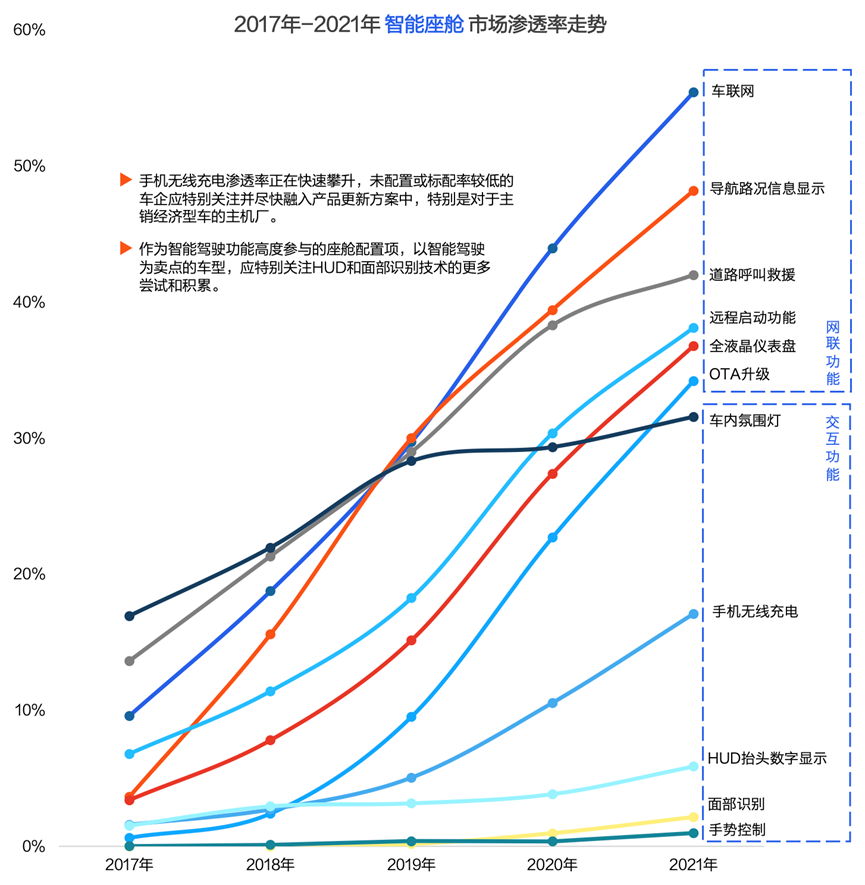
Several Key Breakthrough Functions
(1) HUD
Before 2020, the penetration rate of HUD was relatively low. With the adoption of new electric vehicle brands, the market penetration rate of HUD has also increased significantly. In this respect, except for NIO, Chinese domestic brands such as Haval, Hongqi, Chery, and Geely have launched a wave of attempts.

(2) Facial Recognition and Gesture Control
Although facial recognition has been widely promoted, there are still difficulties in its integration. The standard rate for all on-sale car models in 2021 was only 2.1%, and the market penetration rate is also at a relatively low level.
Chinese domestic brands are more willing to take bold attempts in this type of configuration. The same situation can be seen in gesture recognition, where the actual usage rate of BMW’s standard configuration is not high, while domestic brands have also quickly applied it.

At MWC 2022, Asahi Glass has established a subsidiary company “Wideye” and demonstrated “On-Glass Applique”, a thin glass integrated in the B pillar of vehicles, which can be used as a user interface and integrated with biometric recognition cameras, touch screens, and hidden networking antennas. This technology is still niche, and it may take a relatively long time to be widely integrated as a standard element of vehicles.
Image## ▲Fig.4 – Wideye’s On-Glass Applique
At MWC, ASKA3D Plate also demonstrated the possibility of using in ATMs and doorbells. HoloActive Touch, which was showcased with BMW at CES 2017, enables projected interactive images in mid-air.
By floating holographic 3D screens 25 cm away, high brightness/contrast and contactless virtual interaction with vehicles can be achieved with the increase in volume, complemented by 3D sensors.
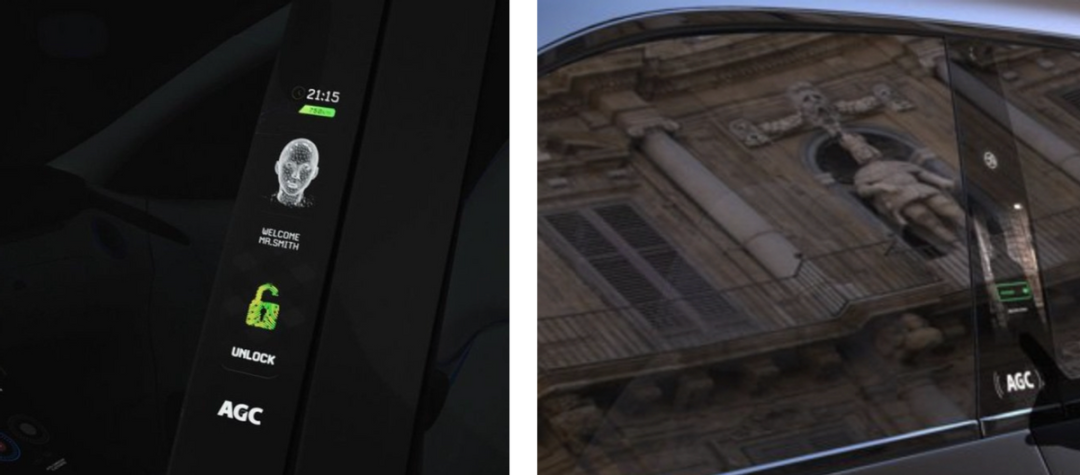
Application of sound field microphones
In terms of sound, NTT Sonority Inc., an NTT incubated company in Japan, developed individualized acoustic zone technology last September, which reproduces sound in a specific area using specialized speakers and sound signal processing technology. Users can listen with their naked ears and achieve sound field processing with sound isolation in a certain area.
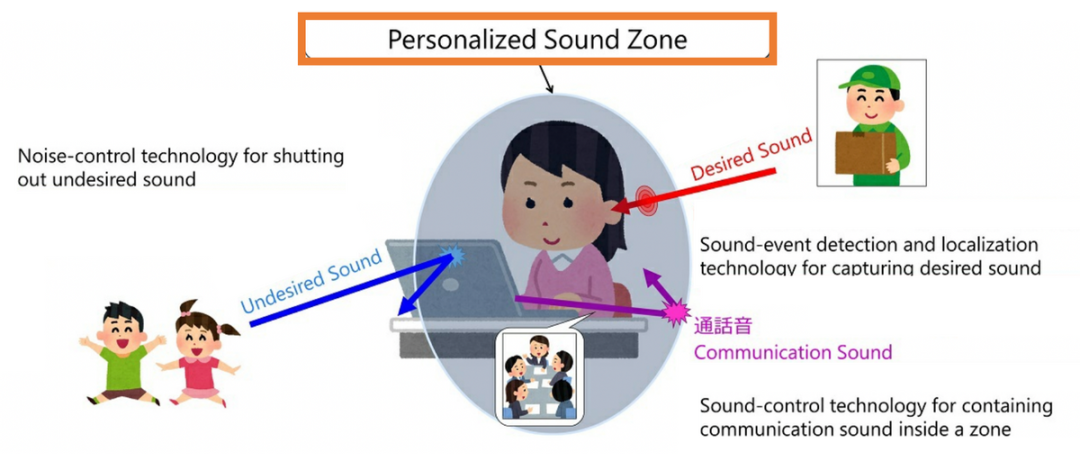
In the automotive scenario, the technology is used to divide the driver, co-pilot, and rear seats into sound fields, especially suitable for people like me who want to listen to their own music while the two kids in the back seat want to listen to children’s songs. The principle of this technology lies in sound wave formation, echo elimination, and other communication technologies that isolate external sounds and create an independent sound field. At CES 2022, Toyota Boshoku applied this concept to the new generation of rear cabins.
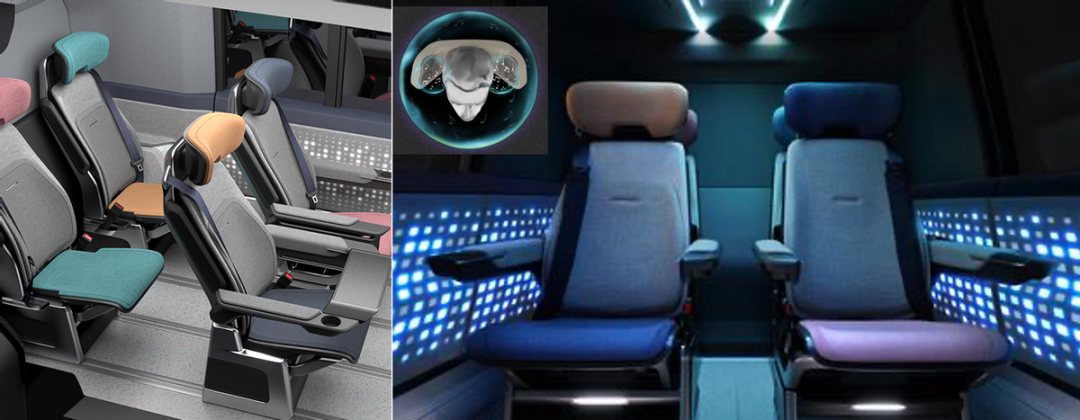
This technology can be used in scenarios such as airplanes and cars, where passengers can listen to different sound sources without the need for earbuds or headphones. The goal is to listen to the content that one wants to hear in a private space through active processing, making long-distance trips more enjoyable and comfortable. Individualized acoustic zone technology combines intelligent microphone technology with active noise reduction technology to create a comfortable sound space and enhance user experience.Summary: I believe that the cabin contains a lot of technical details, not only limited to screens and voice interaction. The iteration of this system synchronizes personal consumer technology with automobile technology, driving the intelligence of cars in personal application. More and more new technologies may be recomposed as elements, and the overall effect depends on the software’s capability.
This article is a translation by ChatGPT of a Chinese report from 42HOW. If you have any questions about it, please email bd@42how.com.
